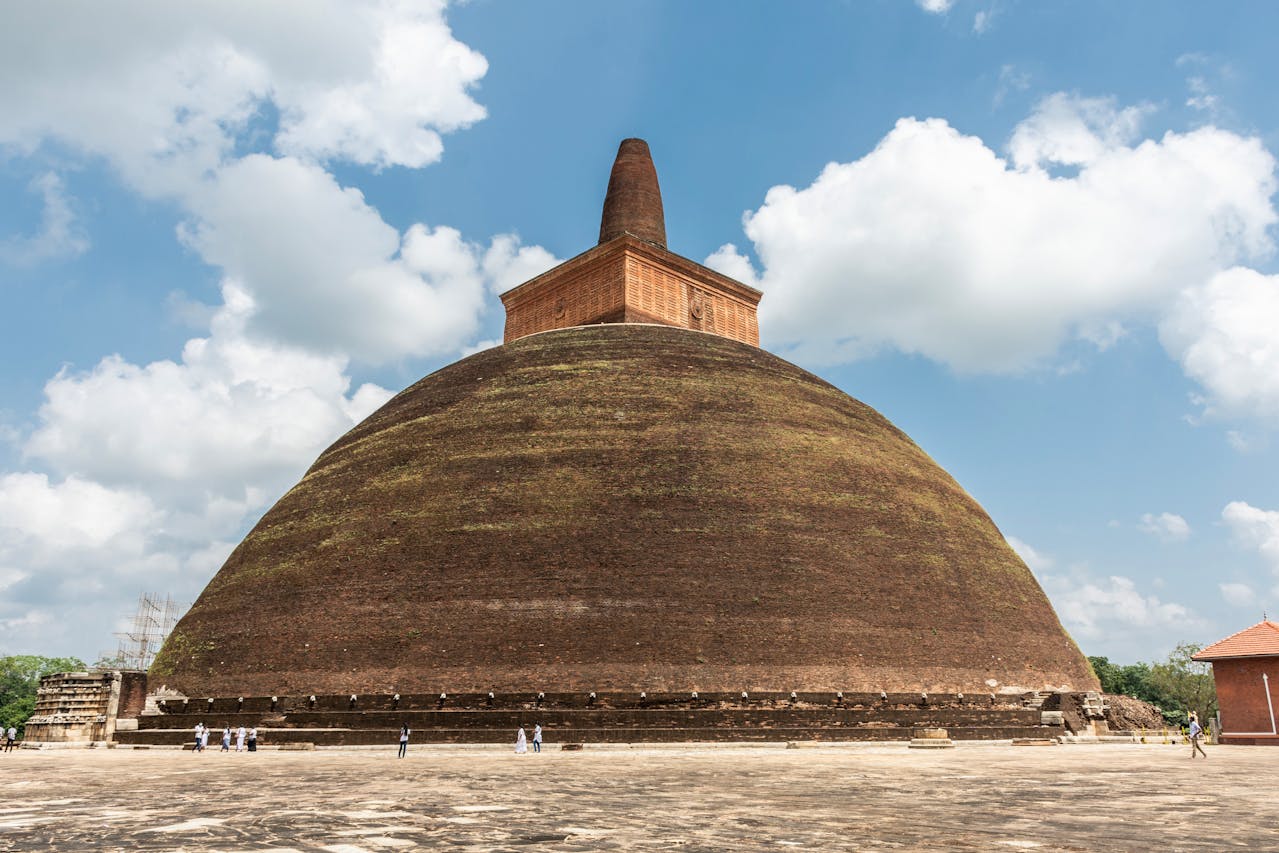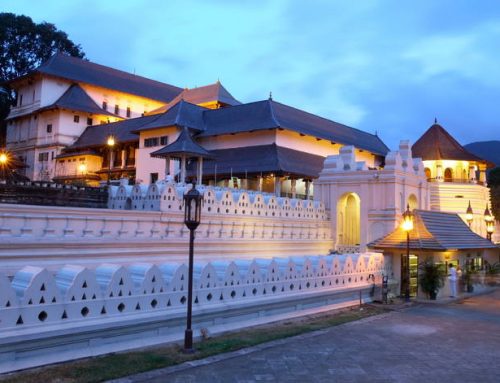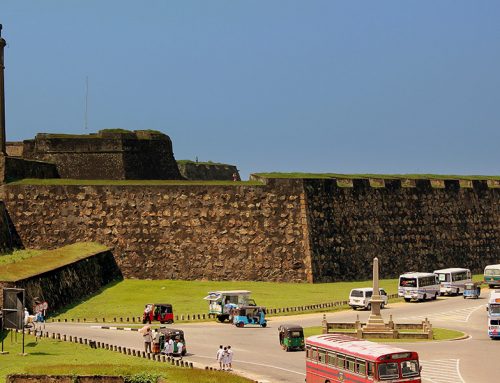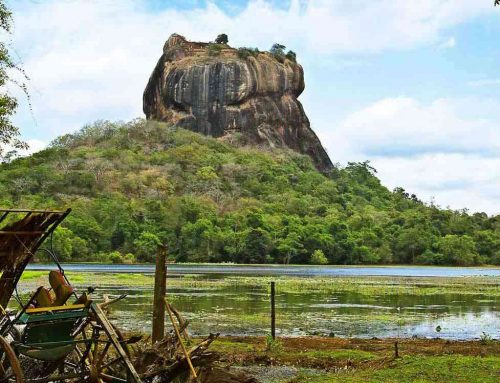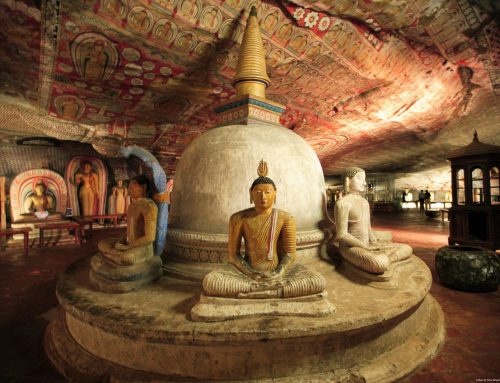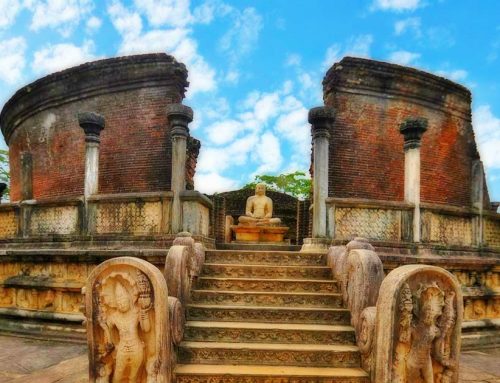Located about 200km from Colombo, Anuradhapura was the first capital city of Sri Lanka with a history of 2500 years. Anuradhapura that resembles in many ways to other great civilizations in world is the cradle of modern Sri Lankan society. Visiting archaeological sites, irrigation systems and ruins of ancient monasteries is an interesting journey through a rich cultural heritage.
History
King Pandukabaya who ruled Sri Lanka in the 4th BC laid the foundation for the city of Anuradhapura that flourished under several kings for many centuries. During this period, kings built the city with many facilities such as hospitals, monasteries and irrigation systems for cultivation. Anuradhapura era that lasted for more than ten centuries is considered as the finest period of Sri Lankan history. Later, the city was shifted to Polonnaruwa due to South Indian invasion, which came after the 10th century.
Arrival of Buddhism
Buddhism came to Sri Lanka during Anuradhapura period from India. While King Devanampiyatissa was ruling Sri Lanka, Empire Asoka, who ruled India, sent his eldest son Mahinda to spread Buddhism – 240 years after the death of Lord Buddha. King Devanampiyathissa met Mahinda Thera at Mihintalaya, about 14 km from Anuradhapura, and embraced Buddhism and made Sri Lanka a Buddhist country.
Sri Maha Bodhi
Few years after the arrival of Buddhism, Sangamiththa, Buddhist nun and daughter of Emperor Asoka, brought Sri Maha Bodhi, a sampling of southern part of the Bodhi tree under which Lord Buddha attained spiritual enlightenment and supreme wisdom. Sri Maha Bodhi was planted in a high terrace about 5 feet, and it is surrounded by iron railings. Sri Maha Bodhi is considered as the oldest human planted tree in the world. Thousands of devotees come to warships and invoke blessings. Sri Maha Bodhi is one of the most sacred places in Anuradhapura.
Anuradhapura has a large number of stupes, which illustrate architectural skills of ancient Sri Lankan civilization. Stupes are large building structures with bell, pot or onion shape built to enshrine relic of Lord Buddha for the purpose of merits.
Ruwanwelisaya
Ruwnwelisaya, the third largest stupa , is the most significant one in Anuradapura. Famous Sri Lankan King Dutugamunu built it after defeating Chole King Elara in the 2nd BC. He built it to represent different aspects of Buddhist philosophy. While its milk bubble indicates the fragile nature of life, which can burst at any time, the box on the top represents four nobles Buddhist truth. Actual sized elephant sculptures built around provide a majestic appearance. It is one of the fully restored dabage in Anuradhapura.
Jethawanaramaya
Built by King Mahasen, Jethawanaramay was considered as one of the largest construction in the world during that period. Its height is about 70 meters, and 93.3 millions bricks had been used to construct it. Constructed on twelve meters foundation, Jethawanarama covers an area of 3 hectares. King Mahasen built it after destruction of Mahaviharaya following a conflict between two Buddhist sects – Theravada and Mahayana. Part of Load Buddha’s sash is enshrined in it.
Lovamahapaya
It is a ancient building located between Ruwanvelisaya and Sri Mahabodhi. King Dutugamunu built it for monks to recite sutra on full moon days. You can see about 1600 stone pillars that support the construction. It took six years to complete construction. The building was destroyed during the period of king Saddatissa.
Mirisaveiti Stupa
King Dutugamunu built Mirisaveti Stupa after defeating Dravidian king Erara. According to the legend, the stupas has taken this name Mirisavetiya because King built it to punish himself for eating chili curry without offering to Buddhist monks. King Kasyapa 1 and Kaspaya v renovated it from time to time. The extent of the land of Mirisavetiya takes about 50 acres.
Tuparamanya
Tuparamaya, which was built by King Dewanampiyatissa, is the first dagaba constructed after the arrival of Buddhism to Sri Lanka. It is believed that the collarbone of Lord Buddha was enshrined in Thuparamaya. In Sri Lanka, veneration of dagab started with the construction of Tuparamaya.
Samadi Statue
Eight feet granite Samadi Statue in Mahameuna Park displays rich artistic skills of the ancient Sri Lankans. Statue portrays Lord Buddha in dhana muddra, a meditative posture associated with first enlightenment, in which Load Buddha keeps his legs crossed and palm upturned. It is considered as one of the greatest pieces of art in Sri Lankan architecture.
Isurumuniya
Issurumuniya is one of the significant places in Anuradapura. King Devnampiyathissa built it as a residence for 500 high cast children who ordain after the arrival of Buddhism to Sri Lanka. Isurumuni lovers take special attention of the visitors. In this bountiful stone carving, a woman sits on the lap of a man with warning finger, but the man displays no feeling. It is believed that the carving represents King Dutugamunu’s son Saliya who married a low cast woman Asokamala.
Kuttam pokuna
Kuttampokuna, or two ponds, symbolizes hydrological, architectural and artistic skills of the ancient Sri Lankan civilization. The water to the ponds was supplied through a system of underground ducts, and the ponds were constructed for the monk to take a bath.
Moonstones
Moonstones are other great artistic features that have taken the attention of scholars and archaeologist. Semi-cycle carved stones at the entrance to the monasteries depict entry from secular to spiritual world. There are four types of animals carved in moonstone – elephants, horses, lions and bulls. Many scholars and archaeologists consider them as a great piece of art work.
Irrigation System
Anuradhapura civilization possessed a remarkable knowledge about irrigation. Ancient kings built many tanks to retain rain water for cultivation. Some of the tanks are Tissa Wawe, Wasaba Wawe and Topa wewa, which were connected with a network of canals to distribute water to farmers. Highly developed irrigation system provides evidence for a well developed civilization.
Anuradhapura, UNESCO world heritage site, is a major tourist destination among travellers who are interested in historical and archaeological locations. You can tour the entire area in one day

